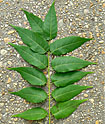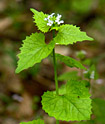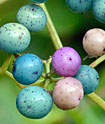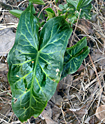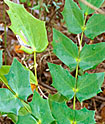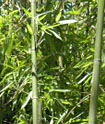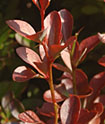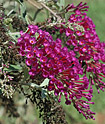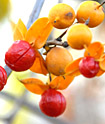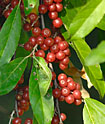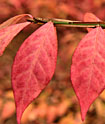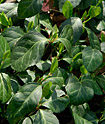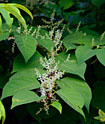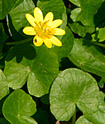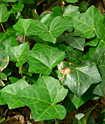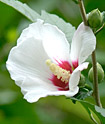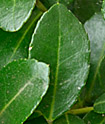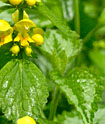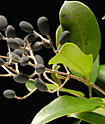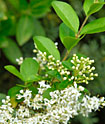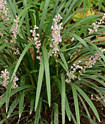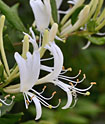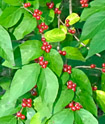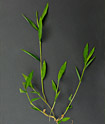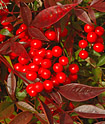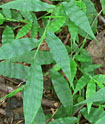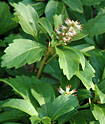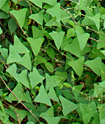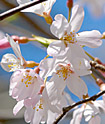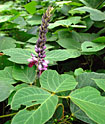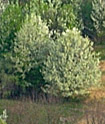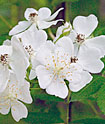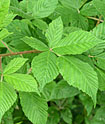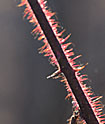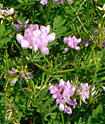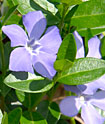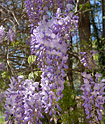Additional Resources and Eco-Links 1

Habitat restoration, including non-native invasive plant removal and native species promotion, is a huge field. The following are some excellent resources you might find helpful. Be sure to also check the Eco-Articles for various topics (sample articles appear below under appropriate headings). Furthermore, please check the collection of notable Groups and Organizations.
Note that “native” and “exotic” species are relative to geographic location and the species-specific resources here concern the Northern Virginia area. People living outside of this area may still use this resource as a guide. However, the plant lists and educational resources may be different in other parts, so please look up local chapters of the Audubon Society, native plant societies, park programs, etc. for regionally-specific information.
With so many links, keeping them all current is an everlasting task. If you notice a dead link, one that needs updating, or even a new one others might find helpful, please contact us with the details including the subsection in which it appears, old html address, and any new information.
Binomial Nomenclature: The correct format for the genus species or a species’ scientific name
Native Plant Lists, Landscaping, and Resources
General Native Plants Lists: Native Plants for Conservation, Restoration, and Landscaping in Virginia https://www.dcr.virginia.gov/natural-heritage/nativeplants
Plant Northern Virginia (NOVA): https://www.plantnovanatives.org/
Native Plants for Northern Virginia https://www.plantnovanatives.org/_files/ugd/9c55f5_1d2d3e0424f0420dacbfc78a48acfb41.pdf
Plant Lists for Professionals https://www.plantnovanatives.org/plant-lists-for-professionals?utm_campaign=74357c18-0763-49ac-89ec-eda5fbe5ba28&utm_source=so&utm_medium=mail&cid=ae81395a-3f78-48a9-8145-8ef3da1b99d0
Native Plants for Wildlife Habitat and Conservation Landscaping: Chesapeake Bay Watershed (downloadable PDF book)
Native Plant Center – Alliance for the Chesapeake Bay: a site for the Mid-Atlantic area with search filters for aspects like plant type and growth conditions: https://www.allianceforthebay.org/native-plant-center/
Lady Bird Johnson Wildflower Center: Native Plant Database https://www.wildflower.org/plants/
Plants attracting birds to the garden https://www.fairfaxcounty.gov/parks/sites/parks/files/assets/documents/nature-history/greenspring/infosheets/nativeplantsforbirds.pdf
Plants attracting butterflies to the garden https://www.fairfaxcounty.gov/parks/sites/parks/files/assets/documents/nature-history/greenspring/infosheets/butterfliesandmoths.pdf
Native Plant-Insect Interactions Guide. The plants featured in this table are general natives to the continental United States and may not be locally native at the state or county level.
Fairfax County brochure, Native Backyard Plants
Gardening for wildlife:
http://www.gardening-for-wildlife.com/
https://www.nwf.org/Garden-For-Wildlife.aspx
Gardening with a good-neighbor policy https://www.nwf.org/Magazines/National-Wildlife/2013/FebMarch/Gardening/Good-Neighbor-Gardening
Eco-Article 15b: The Birds and the Butterflies – Part 1 (2009-06)
Eco-Article 17a: The Birds and the Butterflies – Part 2 (2009-09)
Digital Atlas of the Virginia Flora: http://vaplantatlas.org/
Themed Wildlife Gardens
Carbon-neutral landscapes: How green is your garden? by Janet Marinelli (April/May 2009) https://www.nwf.org/en/Magazines/National-Wildlife/2009/How-Green-Is-Your-Garden
Dog-resistant landscapes: Create a dog-friendly wildlife garden by Doreen Cubie (2009) https://www.nwf.org/Magazines/National-Wildlife/2009/Create-a-Dog-Friendly-Wildlife-Garden
Gardens and anthropogenic climate change resources: https://www.nwf.org/Our-Work/Environmental-Threats/Climate-Change/Greenhouse-Gases/Gardening-for-Climate-Change
Turning a garden or property into a Certified Wildlife Habitat: https://www.nwf.org/certify
Tree Resources General Information: https://wcmtrain.fairfaxcounty.gov/publicworks/trees
Magnolia Bogs: https://www.nps.gov/nace/planyourvisit/upload/Magnolia%204-24%20Lo-Res.pdf
Proper Tree Care
- https://www.fairfaxcounty.gov/publicworks/trees
- Selecting an arborist https://www.fairfaxcounty.gov/cableconsumer/csd/selecting-arborist-tree-care-company
- How to hire a tree company https://www.fairfaxcounty.gov/publicworks/how-hire-arborist-or-tree-care-company
- https://environment.arlingtonva.us/trees/care-for-trees/tree-care-tips/
- http://www.harvestpower.com/how-to-mulch-around-trees/
Native Plant Vendors of Virginia and the Mid-Atlantic States [click here to access]
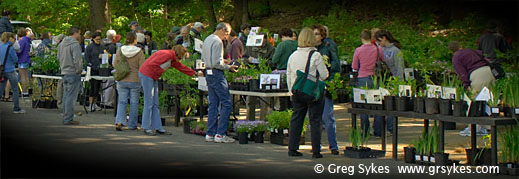
Poison Ivy Facts: More Friend Than Foe (yes, really!)
- https://poisonivy.aesir.com/view/faq.html
- https://www.amnh.org/learn/biodiversity_counts/ident_help/poison_ivy.htm
- https://www.fairfaxcounty.gov/soil-water-conservation/poison-ivy
- https://www.poison-ivy.org/faq
- Eco-Article 6b: What About Poison Ivy?
Protect against poison ivy rashes by covering yourself with longs sleeves and gloves when working in any potential poison ivy area. If you come into contact with poison ivy at any time of year, a great product to remove oils is Tecnu. If the rash develops, try Tecnu Extreme. People suffering severe poison ivy reactions should see their doctor.
Native Animals
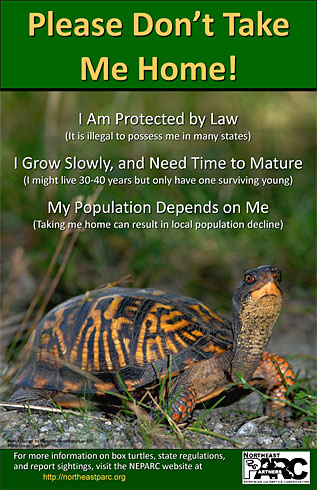 Often when kids find a box turtle, they want to take it home. If your children do, please have them return it to the woods where it was found. Eastern box turtle populations are declining do to habitat loss, road kill, and the pet industry. Please teach your kids that that best action to take is respecting and leaving box turtles alone. Observe them in the wild. Take some pictures—each shell is unique and maybe the children will match the photo when they encounter this same turtle again! Thanks!
Often when kids find a box turtle, they want to take it home. If your children do, please have them return it to the woods where it was found. Eastern box turtle populations are declining do to habitat loss, road kill, and the pet industry. Please teach your kids that that best action to take is respecting and leaving box turtles alone. Observe them in the wild. Take some pictures—each shell is unique and maybe the children will match the photo when they encounter this same turtle again! Thanks!
More information is at:
- https://www.iucnredlist.org/species/21641/97428179
- http://herpetology.com/belzer/boxturtle.htm
- Nazdrowicz, Nathan H., Jacob L. Bowman and Roland R. Roth. 2008. Population ecology of the eastern box turtle in a fragmented landscape. The Journal of Wildlife Management 72(3):745-753.
- Wildlife Rescue League of Northern Virginia, info and contact for injured wildlife https://www.wildliferescueleague.org/
- The list of Wildlife Rehabilitators in Virginia: https://www.wildlifecenter.org/wildlife-rehabilitators-virginia
Poster from http://northeastparc.org/box-turtle-educational-info/ and used by permission, NEPARC 2010.
Snake Information
- http://virginiaherpetologicalsociety.com/reptiles/snakes/snakes_of_virginia.htm
- https://www.fairfaxcounty.gov/wildlife/reptiles
- Eco-Article 15c: Look I Found a Snake–COOL (2009-06)
Beaver Facts and Conservation
- http://www.beaversww.org/
- https://www.fairfaxcounty.gov/wildlife/beaver
- https://www.fairfaxcounty.gov/parks/sites/parks/files/assets/documents/naturalcultural/stewardship%20brochures/beavercard.pdf
- Eco-Article 12c: A Tribute to Beavers (2008-12)
- Eco-Article 13a: Applying the Beavers’ Blueprints (2009-01)
- Eco-Article 33: New Beaver Activity at Royal Lake (2012-01)
Insect and Spider Identification
- https://www.insectidentification.org/
- https://www.whatsthatbug.com/
- https://spiderid.com/locations/united-states/virginia/
General Non-Native Invasive Plant Information
- Preventing Aquatic Invasive Species Spread https://dnr.wi.gov/topic/Invasives/prevention.html
- Nonnative Plants: Ecological Traps—Offering alluring habitat for songbirds, exotic plants may actually decrease the animals’ long-term survival and fitness by John Carey (February/March 2013) https://www.nwf.org/Magazines/National-Wildlife/2013/FebMarch/Gardening/Ecological-Traps
Non-Native Invasive Plant Species Lists
- http://www.dcr.virginia.gov/natural-heritage/invspinfo
- https://www.invasiveplantatlas.org/
- https://www.fairfaxcounty.gov/parks/sites/parks/files/assets/documents/naturalcultural/invasive%20forest%20plants%20brochure.pdf
- Eco-Article 22: Invasive Plant Q/As—the Short-List (2010-05)
Saver, Matthew, Amanda Treher, Lenny Wilson, Robert Naczi, and Faith B. Kuehn. November 2008. Mistaken Identity? Invasive Plants and their Native Look-alikes: an Identification Guide for the Mid- Atlantic. Delaware Department of Agriculture. pp. 68. https://www.nybg.org/files/scientists/rnaczi/Mistaken_Identity_Final.pdf
Specific Non-Native Invasive Plants
Non-Native Invasive Animals
Agrilus planipennis or Agrilus marcopoli (Emerald Ash Borer): Invasive Beetle from Asia
Branta canadensis (Canada Goose): Information and Control
Educational Programs in Northern Virginia
Audubon At Home http://audubonva.org/audubon-at-home-1
Fairfax Master Naturalist Program http://www.vmnfairfax.org/SitePages/Home.aspx
Parktakes Activities and Classes https://www.fairfaxcounty.gov/parks/parktakes/
Return to Additional Resources and Eco-Links 2.
Return to IMA Homepage.

